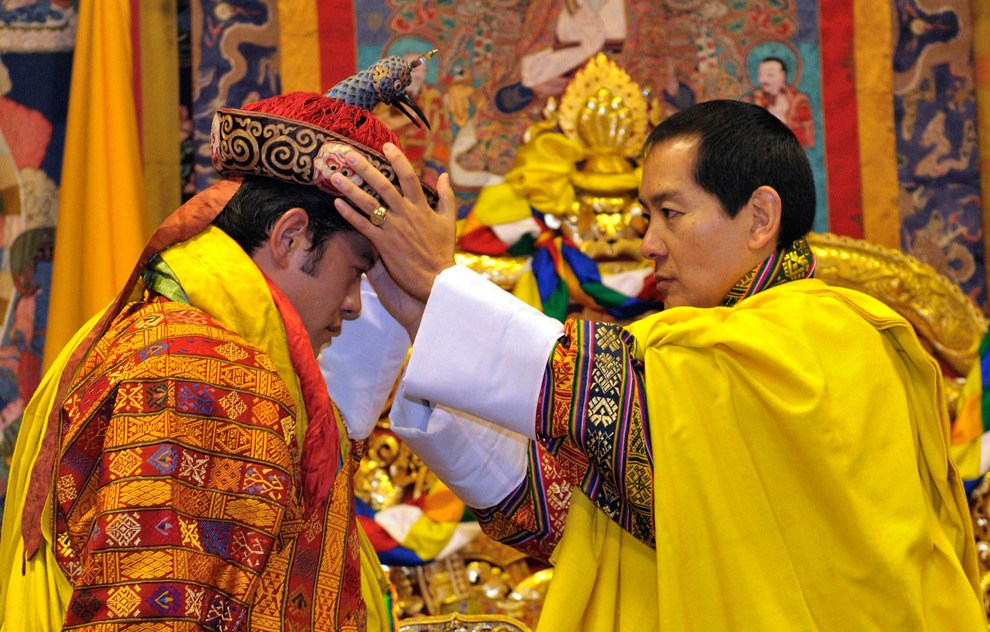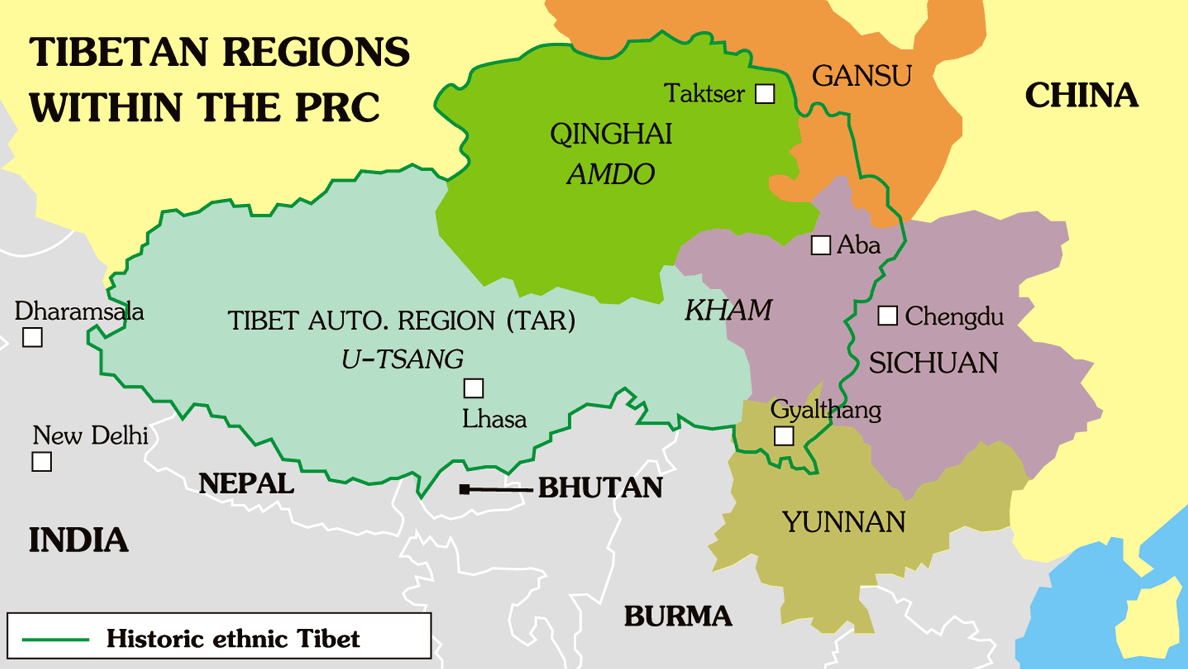Of the four modern day countries that border with historical Tibet – India, Nepal, Bhutan and Myanmar – Bhutan has always been traditionally closely associated with Tibet. Both have Buddhism as their main religion, rely on the same writing script developed by Thonmi Sambhota, and the Bhutanese and Tibetans share many of the same saints, form of worship, foods, customs and even architectural styles as one another. Someone who is familiar with Tibetans would feel very at home and familiar in Bhutan.
So on paper and in theory, one would be forgiven for assuming that the Bhutanese are the Tibetans’ biggest supporters. After all, why would two brothers in Central Asia with so many commonalities, struggle to find reasons to be supportive of each other? To be anything other than supportive seems almost inconceivable.
Yet, as we dig deeper into the issues of the Central Tibetan Administration (CTA; Tibetan leadership), we can see clearly why support has not been forthcoming by the Bhutanese to the Tibetans. For the last 60 years, the CTA’s selfishness and schemes, and sense of entitlement have led a close ‘relative’ to effectively reject them since the 1980s.

King Jigme Singe Wangchuck introduced many modern reforms to Bhutan. He even used his absolute power as a monarch to force democracy on his adoring people, before abdicating the throne in favor of his son King Jigme Khesar, whom he is seen here crowning. In 1974, 28 Tibetans, including the Dalai Lama’s representative to Bhutan, were arrested for conspiring to assassinate Bhutan’s respected and forward-thinking king. No wonder Bhutan eventually came to reject the Tibetans.
In 1979, the Bhutanese government issued the Tibetans in their country with an ultimatum: become Bhutanese or go back to China. This came after 28 Tibetans, including the Dalai Lama’s representative in Thimphu (Bhutan’s capital) were arrested and accused of conspiring to assassinate Bhutan’s beloved King Jigme Singye Wangchuck. It also followed after tensions had grown between the Tibetan refugees and the local Bhutanese who were understandably upset by the Tibetans’ refusal to assimilate into Bhutanese culture.
Although the government’s move seemed harsh at the time, we now know from history that this decision was fueled by some incredible foresight, because the government knew that allowing Tibetans to remain Tibetans would:
- Allow them to engage in constant protests for the ‘Tibetan cause’ which would be disruptive to Bhutan’s peace and own drive towards modernization and improvement
- Encourage them to remain ostracized from the Bhutanese population, and therefore suffer resentment and discrimination for being refugees
By giving Tibetans the option of becoming Bhutanese, it would instead:
- Encourage them to be assimilated into Bhutanese society so they would have legal access and rights to all of the services and economic potential that every Bhutanese has a right to
- Ensure that their kingdom would remain peaceful and avoid all of the disagreements and conflicts that India and Nepal had to struggle with in the succeeding years
- Ensure that Tibetans who remained in the country would become contributing members of their society and economy, and become less reliant on hand-outs
- Take the “Tibetan refugee” situation out of the equation in any of their dealings with China, and allow them to remain focused on developing their country holistically
Shockingly however, the CTA at the time opposed this ultimatum by the Bhutanese government who had already kindly given refuge to 4000 Tibetan refugees. CTA officials were even accused of creating difficulties for the Tibetans refugees in Bhutan, although these Bhutan-based Tibetans had already accepted that Bhutan was the country of their future. It is a move that was echoed 38 years later when, in 2017, Tibetans were given the opportunity to become Indian citizens but the CTA made moves to sabotage it. The CTA clearly have a pattern of acting against their people’s own best interests.
And in spite of the CTA’s opposition to Bhutan, 2,300 Tibetans did opt to become Bhutanese citizens while the remainder resettled in India where they continue to live under the yoke of the CTA. And since that time, Bhutan has remained silent on the issue of Tibet and scarred from their experiences in the 1970s, it looks like they will continue to do so. So just add Bhutan to the list of countries who have rejected the Tibetans, as the CTA are increasingly disfavored around the world and sadly, they fail to take into account how much the world does not need them. In befriending, supporting and donating to the Tibetan leadership, what do the world get except for the feel-good factor, and a pat on the back for having helped the less fortunate? In befriending and supporting China, nations get jobs, a more vibrant economy and a boosted tourist industry.

The green line on the map delineates historical Tibet, while the countries in grey below are those which border with them. Except for India, whose support is already waning, none of the countries which border with historical Tibet support their “Tibetan cause”. Meanwhile, instead of focusing on the welfare of their people in India, the Tibetan leaders gallivant around the world on the pretext of drumming up support. What support have they accomplished when no one in their region will stand up for them?
So what do the CTA have that anybody really wants? Not much. They are like a door-to-door salesman you made the mistake of opening your front door to; he will just keep coming back over and over again because he knows someone he can make a sale to, and squeeze money from. But while the CTA has focused on traveling the world to make this sale so they can accumulate financial support and not much else, China has been focused on Tibet’s doorstep, courting the border countries and locking down their support in order to ensure that they remain in control of the situation. As a result, aside from India, none of the other countries sharing a common border with historical Tibet have lent their support to the Tibetan cause – Myanmar remains supportive of China’s policies, as are Nepal and eventually Bhutan.
So is the CTA’s policy working? It is a firm and resolute ‘no’, and it is obvious to see when you compare the successes of the Bhutanese with that of the CTA. While Bhutan is lauded as an internationally recognized and shining example of a “people and environment first” government policy, the CTA is famous for being refugees. Since entering exile in 1959, the CTA has become a dab hand at offending, rejecting and befriending all of the wrong people. They continuously offend and protest against the Chinese leadership who controls Tibet; they befriend the West who will not do anything except give pocket change, and they reject and abuse the people who have been kind to them, like India and Bhutan.
They even reject and abuse their own people, regardless of where in the world they are – just as Bhutan accused the Tibetan leadership of making life difficult for Bhutanese-based Tibetans, the CTA have also been accused of making life difficult for marginalized groups like Dorje Shugden practitioners and the Jonangpas who have been fighting for equal representation in the Tibetan parliament. So 60 years in exile has resulted in a leadership that has failed to garner firm and decisive political support for their goals, and failed to provide a decent future for their people. If the CTA continues down this path, Bhutan will not be the last nation that rejects them until one day finally, there will be no one and nothing left but disappointments.
Bhutan: Tibetan Tangle

Click to read the full report. (Source: http://indiatoday.intoday.in/story/bhutanese-government-says-political-ties-between-tibetans-and-dharamsala-unacceptable/1/427120.html)
MORE NEWS LIKE THIS